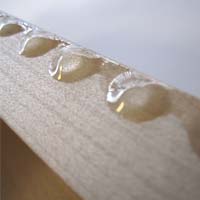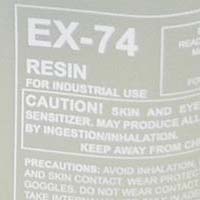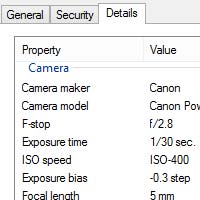| Glossary Of Giclee Terms
[9] |
E
Eco-Solvent Inks An alternative to regular solvent inks that are much less toxic. This quality is beneficial because it allows the inks to be used in smaller print shops without extensive ventilation.
Solvent Ink:
An ink formulated for inkjet printers, ideal for printing directly to vinyl and other plastics. The corrosive nature of the compounds "eat" into the surface of the substrate, securing the pigment or dye.
As a result, solvent inks are waterproof, scratch resistant, and fade proof, perfect for outdoor signage and billboard displays.
Solvent ink can also refer to any type of printer ink that is not water-based.
|
| Edge Sharpness Edge sharpness refers to the clarity and definition of edges in a printed image, particularly in areas of high contrast or fine detail. It is influenced by factors such as printer resolution, image resolution, ink droplet size, and substrate texture. Achieving optimal edge sharpness is essential for producing prints with crisp detail, smooth transitions, and accurate reproduction of fine lines and text in Giclée printing. Proper image processing, printer calibration, and substrate selection can help improve edge sharpness and enhance overall print quality. |
| Enlargement An enlargement refers to a printed image that has been reproduced at a larger size than its original dimensions. It involves scaling up the image to create a larger print while maintaining its aspect ratio and visual quality. Enlargements are commonly produced in Giclée printing by using high-resolution digital files or enlarging photographic negatives or transparencies during the printing process. Enlargements are often used in fine art, photography, and commercial printing to showcase detailed artwork, photographs, or graphics on a larger scale. |
| Enlarger An enlarger is a device used in traditional darkroom photography to project and focus an image from a negative or transparency onto photosensitive paper for printing. It consists of a light source, a negative carrier, a lens system, and an adjustable height mechanism to control the size and focus of the projected image. Enlargers allow photographers and printmakers to produce prints of various sizes by adjusting the magnification and exposure settings during the printing process. Although less common in the digital age, enlargers are still used by some photographers and artists for producing analog prints and alternative printing techniques. |
Epoxy resin A clear, viscous coating made from synthetic polymers that is applied to a surface. The resin hardens into a shiny, glass-like coating. Many epoxy resins are self-levelling, which means a flat surface will form without manually spreading the liquid.
Order Online: Epoxy Resin Ex-74
Learn more about our variety of resin coating services.
Read more in our article: Epoxy Resin Coatings |
 |
EX-74 Resin A liquid coating that, when applied to a flat surface, will harden into a clear, high gloss, protective cover that is resistant to fading and discoloration caused by UV exposure. It is waterproof and heat-resistant once set.
Order Online: Epoxy Resin Ex-74
Read more: Epoxy Resin Coatings |
 |
| EXIF Besides information about the pixels of the image, most cameras store additional information such as the date and time the image was taken, aperture, shutterspeed, ISO, and other camera settings. |
 |
Exposure Compensation Exposure compensation is a camera setting that allows photographers to manually adjust the exposure settings to achieve the desired brightness or darkness in a photograph. It is typically expressed in terms of exposure value (EV) increments, with positive values indicating increased brightness (overexposure) and negative values indicating decreased brightness (underexposure).
Exposure compensation is useful in situations where the camera's automatic exposure metering may not accurately capture the desired exposure, such as high-contrast scenes or backlit subjects. In Giclée printing, exposure compensation may also be applied during the image editing process to fine-tune the exposure and optimize print quality. |
| Exposure Value (EV) Exposure Value (EV) is a numerical scale that represents a combination of aperture and shutter speed settings used to achieve a specific exposure level in photography. It provides a standardized way to measure and compare different combinations of aperture and shutter speed settings. Each increment on the EV scale represents a doubling or halving of the amount of light reaching the camera sensor or film. Photographers use EV to adjust exposure settings to compensate for changes in lighting conditions or achieve creative effects while maintaining consistent exposure levels. |
|

|



|
USA Giclee On Canvas, Fine Art Printing - Art Scanning & Reproductions - Handmade Oil Paintings - Custom Wood Panels, Metal Picture Framing - Block/Plaque Mountings, Large Format Dry Mounting & Lamination - Art Supplies: Stretcher Bars, Cradled Wood Panels and Artist Canvas - Collages On Canvas - Plexi/Acrylic Face Mounts - Block Acrylics, Fabric Printing, Dye Sublimation - Cityscape Skyline Prints, Resin, Photo Gifts and more...
|
|
© 2002-2025 - KeenART Media Ltd.
|
|
| |
|
